Nickname(s) The Shadow Commander Name Qasem Soleimani Awards Fath Medal of Honor | Years of service 1980—2020 Role Military Officer | |
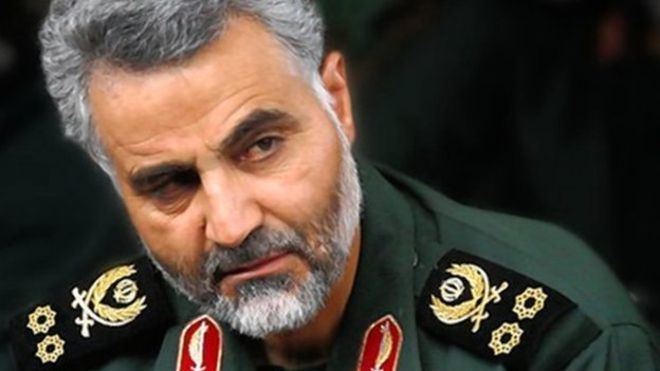 | ||
Born 11 March 1957 Rabor, Iran ( 1957-03-11 ) Died 3 January 2020 (aged 62) Battles/wars Kurdish Rebellion (1979)Iran–Iraq War Operation Tariq al-Qods Operation Beit ol-Moqaddas Operation Ramadan Operation Before the Dawn Operation Dawn (1983) Operation Dawn 5Operation Dawn 6Battle of the Marshes Operation KheibarOperation Badr (1985)First Battle of al-Faw Operation Dawn 8Battle of Mehran Operation Karbala-5Operation Karbala-6 Operation Karbala 10 Operation Mersad KDPI insurgency (1989–96)South Lebanon conflictInvasion of AfghanistanIraq War Karbala raid Sa'dah WarIran–Israel proxy conflict Israel-Gaza conflict Syrian Civil War Al-Qusayr offensive Southern Syria Zabadani Northern Syria Aleppo Kuweires War on ISILIraqi theatre Siege of Amirli Liberation of Jurf Al SakharBattle of Baiji Liberation of Tikrit Syrian theatre Rescue mission Service/branch Army of the Guardians of the Islamic Revolution Similar People Abu Bakr al‑Baghdadi, Ali Khamenei, Mohammad Ali Jafari, Mahmoud Ahmadinejad, Mir‑Hossein Mousavi | ||
Who is qasem soleimani
Major general Qasem Soleimani (Persian: قاسم سلیمانی, born 11 March 1957 – 3 January 2020 ) also spelled Qanat-e Malek, Iran) was an Iranian senior military officer in the Army of the Guardians of the Islamic Revolution (IRGC) and since 1998 commander of its Quds Force—a division primarily responsible for extraterritorial military and clandestine operations. A veteran of the Iran–Iraq war of the 1980s, he has been active in many conflicts in the rest of the Middle East, especially in Iraq and the Levant, while maintaining a low profile. His methods have been a blend of military assistance to ideological allies and hard-nosed strategic diplomacy. It has long provided military assistance to anti-Saddam Shia and Kurdish groups in Iraq, Hezbollah in Lebanon, and Hamas in the Palestinian territories. In 2012, Soleimani helped bolster the Syrian government, a key Iranian ally, during the Syrian Civil War. Soleimani also assisted in the command of combined Iraqi government and Shia militia forces that advanced against the Islamic State of Iraq and the Levant (ISIL) in 2014–2015.
Contents
- Who is qasem soleimani
- Early life and education
- Career and activities
- Command of Quds Force
- Syrian Civil War
- War on ISIS in Iraq
- Orchestration of military escalation in 2015
- Operations in Aleppo
- Operations in 2017
- In popular culture
- In politics
- Personal life
- Sanctions
- References
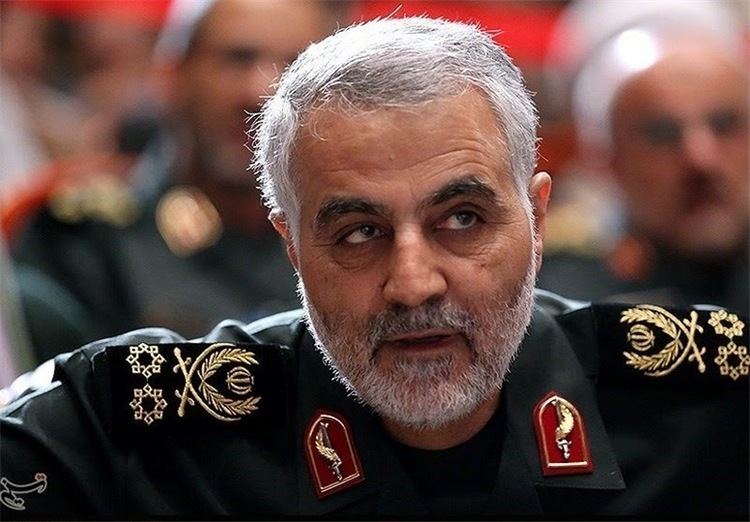
Early life and education
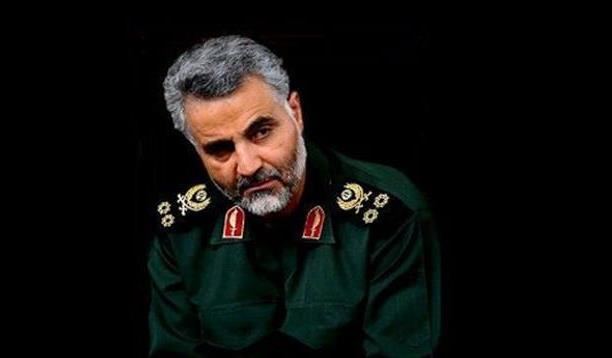
Soleimani was born in Qanat-e Malek village, Rabor County, Kerman Province, to an impoverished peasant family. In his youth, he moved to the city of Kerman and worked as a construction worker to help repay a debt his father owed. In 1975, he began working as a contractor for the Kerman Water Organization. When not at work, he spent his time lifting weights in local gyms and attending the sermons of a traveling preacher by the name of Hojjat Kamyab – a protege of Ayatollah Khomeini.
Career and activities
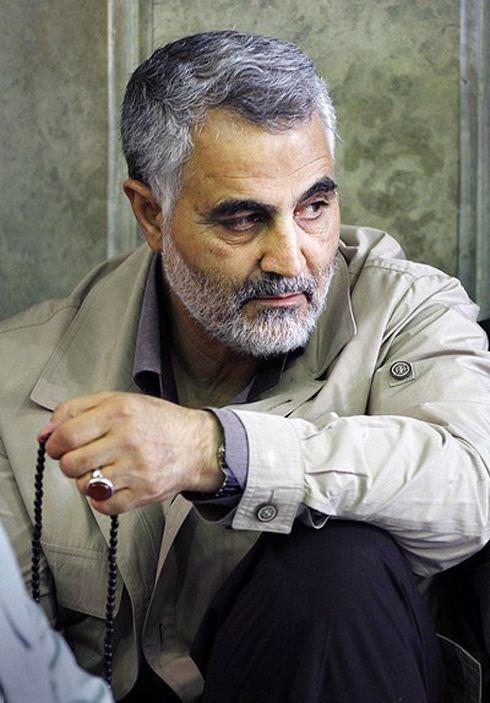
Soleimani joined the Revolutionary Guard (IRGC) in 1979 following the Iranian Revolution, which saw the Shah fall and Ayatollah Khomeini take power. Reportedly, his training was minimal, but he advanced rapidly. Early in his career as a guardsman, he was stationed in northwestern Iran, and participated in the suppression of a Kurdish separatist uprising in West Azerbaijan Province.

On 22 September 1980, when Saddam Hussein launched an invasion of Iran, setting off the Iran–Iraq War (1980–1988), Suleimani joined the battlefield serving as the leader of a military company, consisting of men from Kerman whom he personally assembled and trained. He quickly earned a reputation for bravery, and rose through the ranks because of his role in the successful operations in retaking the lands Iraq had occupied, eventually becoming the commander of the 41st Sarallah Division while still in his 20s, participating in most major operations. He was mostly stationed at the southern front He was heavily injured in Operation Tariq-ol-Qods. In a 1990 interview, he mentions Operation Fath-ol-Mobin as "the best" operation he participated in and "very memorable", due to its difficulties yet positive outcome. He was also engaged in leading and organizing irregular warfare missions deep inside Iraq carried out by the Ramadan Headquarters. It was at this point that Suleimani established relations with Kurdish Iraqi leaders and the Shia Badr Organization, both of which opposed to Iraq's Saddam Hussein.

On July 17, 1985, Soleimani opposed the IRGC leadership’s plan to deploy forces to two islands in western Arvandroud (Shatt al-Arab).
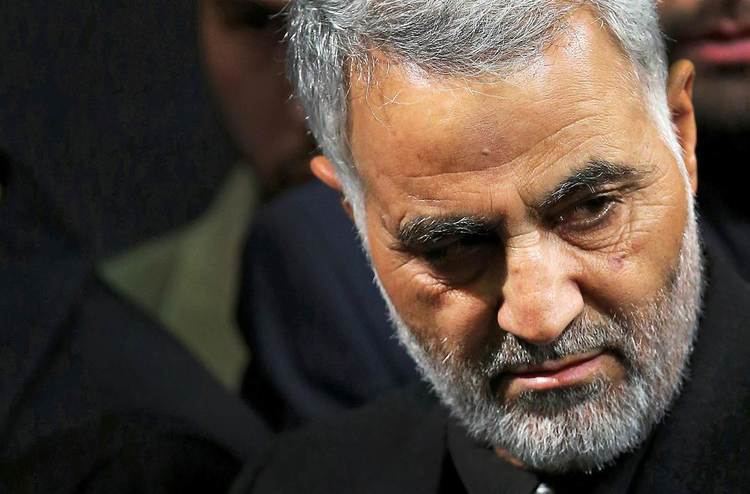
After the war, during the 1990s, he was an IRGC commander in Kerman Province. In this region, which is relatively close to Afghanistan, Afghan-grown opium travels to Turkey and onto Europe. Soleimani's military experience helped him earn a reputation as a successful fighter against drug trafficking.
During the 1999 student revolt in Tehran, Soleiman was one of the IRGC officers who signed a letter to President Mohammad Khatami. The letter stated that if Khatami did not crush the student rebellion the military would, and might also launch a coup against Khatami.
Command of Quds Force
The exact date of his appointment as commander of the IRGC's Quds Force is not clear, but Ali Alfoneh cites it as between 10 September 1997 and 21 March 1998. He was considered one of the possible successors to the post of commander of the IRGC, when General Yahya Rahim Safavi left this post in 2007. In 2008, he led a group of Iranian investigators looking into the death of Imad Mughniyah. Soleimani helped arrange a ceasefire between the Iraqi Army and Mahdi Army in March 2008.
Following the September 11 attacks of 2001, Ryan Crocker, a senior State Department official in the United States, flew to Geneva to meet with Iranian diplomats who were under the direction of Soleimani with the purpose of collaborating to destroy the Taliban, which had targeted Shia Afghanis. This collaboration was instrumental in defining the targets of bombing operations in Afghanistan and in capturing key Al Qaeda operatives, but abruptly ended in January 2002, when George W Bush named Iran as part of the "Axis of evil" in his State of the Union address.
In 2009, a leaked report stated that General Soleimani met Christopher R. Hill and General Raymond T. Odierno (America’s two most senior officials in Baghdad at the time) in the office of Iraq’s president, Jalal Talabani (who has known General Soleimani for decades). Hill and General Odierno denied the occurrence of the meeting.
On 24 January 2011, Soleimani was promoted to Major General by Supreme Leader Ali Khamenei. Khamenei is described as having a close relationship with him, helping him financially and has called Soleimani a "living martyr".
Soleimani has been described as "the single most powerful operative in the Middle East today" and the principal military strategist and tactician in Iran's effort to combat Western influence and promote the expansion of Shiite and Iranian influence throughout the Middle East. In Iraq, as the commander of the Quds force, he is believed to have strongly influenced the organization of the Iraqi government, notably supporting the election of previous Iraqi Prime Minister Nuri Al-Maliki. Soleimani has even been described as being "Iran’s very own Erwin Rommel".
According to some sources, Soleimani is the principal leader and architect of the military wing of the Lebanese Shia party Hezbollah since his appointment as Quds commander in 1998.
Syrian Civil War
According to several sources, including Riad Hijab, a former Syrian premier who defected in August 2012, he was also one of the staunchest supporters of the Syrian government of Bashar al-Assad in the Syrian Civil War. In the later half of 2012, Soleimani assumed personal control of the Iranian intervention in the Syrian civil war, when Iranians became deeply concerned about the Assad government's lack of ability to fight the opposition, and the fallout to the ISIS if the Syrian government fell. He was reported to have coordinated the war from a base in Damascus at which a Lebanese Hezbollah commander and an Iraqi Shiite militia coordinator have been mobilized, in addition to Syrian and Iranian officers. Brigadier General Hossein Hamadani, the Basij’s former deputy commander helped to run irregular militias that Soleimani hoped to continue the fight if Assad falls. Under Soleimani the command had "coordinated attacks, trained militias, and set up an elaborate system to monitor rebel communications". The retaking of Qusayr in May 2013 from Syrian rebels was, according to John Maguire, a former CIA officer in Iraq, "orchestrated" by Soleimani.
He was widely credited with delivering the strategy that has helped President Bashar al-Assad turn the tide against rebel forces and recapture key cities and towns. The details of his involvement however are little known but many events from the training of government allied militias and coordination of decisive military offensives to the sighting of Iranian UAVs & spy-drones in Syria, strongly suggest that his command (the Quds force) is heavily involved in many aspects of the civil war. In a visit to the Lebanese capital Beirut on Thursday 29 Jan 2015, Soleimani laid wreaths at the graves of the slain Hezbollah members, including Emad Mughniyah, the son of late Hezbollah commander Imad Mughniyah which strengthens some possibilities about his role in Hezbollah military reaction on Israel.
Soleimani helped in formation of the National Defence Forces (NDF) in Syria.
In October 2015, it was reported that he had been instrumental in devising during his visit to Moscow in July 2015 the Russian-Iranian-Syrian offensive in October 2015.
War on ISIS in Iraq
Qasem Soleimani was in the Iraqi city of Amerli, to work with the Iraqi forces to push back militants from ISIS. According to the Los Angeles Times, which reported that Amerli was the first town to successfully withstand an ISIS invasion, it was secured thanks to "an unusual partnership of Iraqi and Kurdish soldiers, Iranian-backed Shiite militias and U.S. warplanes". The US acted as a force multiplier for a number of Iranian-backed arm groups—at the same time that was present on the battlefield.
A senior Iraqi official told the BBC that when the city of Mosul fell, the rapid reaction of Iran, rather than American bombing, was what prevented a more widespread collapse. Qasem Soleimani also seemed to have been instrumental in planning the operation to relieve Amirli in Saladin province where ISIS had laid siege to an important city. In fact the Quds force operatives under Soleimani's command seemed to have been deeply involved with not only the Iraqi army and Shi'ite militias but also the Kurdish in the Battle of Amirli, not only providing liaisons for intelligence sharing but also the supply of arms and munitions in addition to "providing expertise".
In the operation to liberate Jurf Al Sakhar, he was reportedly "present on the battlefield". Some Shia militia commanders described Soleimani as "fearless"—one pointing out that the Iranian general never wears a flak jacket, even on the front lines.
Hadi al-Amiri, the former Iraqi minister of transportation and the head of the Badr Organization [an official Iraqi political party whose military wing is one of the largest armed forces in the country] highlighted the pivotal role of General Qasem Soleimani in defending Iraq's Kurdistan Region against the ISIL terrorist group, maintaining that if it were not for Iran, Heidar al-Ebadi's government would have been a government-in-exile right now. and he added there would be no Iraq if Gen. Soleimani hadn't helped us.
There were reports by some Western sources that Soleimani has been seriously wounded in action against ISIL in Samarra. The claim was rejected by Iranian Deputy Foreign Minister for Arab and African Affairs Hossein Amir-Abdollahian.
Soleimani played an integral role in the organisation and planning of the crucial operation to retake the city of Tikrit in Iraq from ISIS. The city of Tikrit rests on the left bank of the Tigris river and is the largest and most important city between Baghdad and Mosul, gifting it a high strategic value. The city fell to ISIS during 2014 when ISIS made immense gains in northern and central Iraq. After its capture, ISIL performed its most infamous massacre at Camp Speicher. After months of careful preparation and intelligence gathering an offensive to encircle and capture Tikrit was launched in early March 2015. Soleimani was directing the operations on the eastern flank from a village about 35 miles from Tikrit called Albu Rayash, captured over the weekend. The offensive was the biggest military operation in the Salahuddin region since last summer, when ISIS fighters killed hundreds of Iraq army soldiers who had abandoned their military base at Camp Speicher outside Tikrit. His planned operation failed, and only after the request of American air power the battle was finally won. Soleimani record as a military commander was darkened after Tikrit and his failed operations in Syria.
Orchestration of military escalation in 2015
In 2015 Soleimani started to gather support from various sources in order to combat the newly resurgent ISIL and rebel groups which were both successful in taking large swathes of territory away from Assad's forces. He was reportedly the main architect of the joint intervention involving Russia as a new partner with Assad and Hezbollah.
According to Reuters, at a meeting in Moscow in July, Soleimani unfurled a map of Syria to explain to his Russian hosts how a series of defeats for President Bashar al-Assad could be turned into victory—with Russia's help. Qasem Soleimani's visit to Moscow was the first step in planning for a Russian military intervention that has reshaped the Syrian war and forged a new Iranian–Russian alliance in support of the Syrian (and Iraqi) governments. Iran's supreme leader, Ali Khamenei also sent a senior envoy to Moscow to meet President Vladimir Putin. "Putin reportedly told the envoy 'Okay we will intervene. Send Qassem Soleimani'. Gen. Soleimani went to explain the map of the theatre and coordinate the strategic escalation of military forces in Syria.
Operations in Aleppo
Soleimani, who assumed overall command in the Aleppo offensives of 2015, had a decisive impact on the theatre of operations and led to a strong advance in southern Aleppo with the government and allied forces re-capturing two military bases and dozens of towns and villages in a matter of weeks. There was also a series of major advances towards Kuweiris air-base to the north-east. By mid-November, the Syrian army and its allies had gained ground in southern areas of Aleppo Governorate, capturing numerous rebel strongholds. Soleimani was reported to have personally led the drive deep into the southern Aleppo countryside where many towns and villages fell into government hands. Soleimani reportedly commanded the Syrian Arab Army’s 4th Mechanized Division, Hezbollah, Harakat Al-Nujaba (Iraqi), Kata'ib Hezbollah (Iraqi), Liwaa Abu Fadl Al-Abbas (Iraqi), and Firqa Fatayyemoun (Afghan/Iranian volunteers).
It is unclear whether or not the General sustained possibly grave injuries, but in response to reports about his injury during the southwest Aleppo operation, he is quoted as saying, "Martyrdom is what I seek in mountains and valleys, but it isn't granted yet".
In early February 2016, backed by Russian and Syrian air force airstrikes, the 4th Mechanized Division – in close coordination with Hezbollah, the National Defense Forces (NDF), Kata'eb Hezbollah, and Harakat Al-Nujaba – launched an offensive in Aleppo Governorate's northern countryside, which eventually broke the three-year siege of Nubl and Al-Zahraa and cut off rebel's main supply route from Turkey. According to a senior, non-Syrian security source close to Damascus, Iranian fighters played a crucial role in the conflict. "Qassem Soleimani is there in the same area", he said. In December 2016, new photos emerged of Soleimani at the Citadel of Aleppo, though the exact date of the photos is unknown.
Operations in 2017
In late March 2017, Soleimani was seen in the northern Hama Governorate countryside, reportedly aiding Maj. Gen. Suheil al-Hassan in repelling a major rebel offensive.
In popular culture
In Western sources, Qassem Suleimani's personality has been compared to the fictional characters Karla, Keyser Söze, and Scarlet Pimpernel. He is said to have a calm presence about him, carry himself "inconspicuously and rarely raises his voice", exhibiting "understated charisma".
The 2016 award-winning movie Bodyguard, directed by Ebrahim Hatamikia, was inspired by Soleimani's activities.
According to a poll conducted by Information and Public Opinion Solutions LLC (iPOS) in March 2016, Soleimani he has 38% approval and 11% disapproval ratings while 45% of responders don't recognize the name.
The 2016 Persian book Noble Comrades 17: Hajj Qassem, written by Ali Akbari Mozdabadi, contains memoirs of Qassem Soleimani. Hadi Al-Ameri the head of the Badr Organization in Iraq says about him: "If Qasem Soleimani was not present in Iraq, Haidar al-Ibadi should form his cabinet out of Iraqi borders".
In politics
In 1999, Soleimani, along with other senior IRGC commanders, signed a letter to then-President Mohammad Khatami regarding the student protests in July. They wrote “Dear Mr. Khatami, how long do we have to shed tears, sorrow over the events, practice democracy by chaos and insults, and have revolutionary patience at the expense of sabotaging the system? Dear president, if you don’t make a revolutionary decision and act according to your Islamic and national missions, tomorrow will be so late and irrecoverable that cannot be even imagined.”
Iranian media reported in 2012 that he might be replaced as the commander of Quds Force in order to allow him to run in the 2013 presidential election. He reportedly refused to be nominated for the election. According to BBC, in 2015 a campaign started among conservative bloggers for Soleimani to stand for 2017 presidential election. In 2016, he was speculated as a possible candidate, however in a statement published on 15 September 2016, he called speculations about his candidacy as “divisive reports by the enemies” and said he will “always remain a simple soldier serving Iran and the Islamic Revolution”.
Personal life
Qasem Soleimani is a Kermani. His father was a farmer and now lives in their village. His mother, Fatemeh died in 2013. He comes from a family of nine and has five sisters and one brother, Sohrab, who lived and worked with Soleimani in his youth. Sohrab Soleimani is a warden and former director general of the Tehran Prisons Organization. U.S. put sanctions on him in April 2017 "for his role in abuses in Iranian prisons".
Soleimani has Dan in karate and was a fitness trainer in his youth. He has four children: two sons and two daughters.
Sanctions
In March 2007, Soleimani was included on a list of Iranian individuals targeted with sanctions in United Nations Security Council Resolution 1747. On 18 May 2011, he was sanctioned again by the United States along with Syrian president Bashar Assad and other senior Syrian officials due to his alleged involvement in providing material support to the Syrian government.
On 24 June 2011, the Official Journal of the European Union said the three Iranian Revolutionary Guard members now subject to sanctions had been "providing equipment and support to help the Syrian government suppress protests in Syria". The Iranians added to the EU sanctions list were two Revolutionary Guard commanders, Soleimani, Mohammad Ali Jafari, and the Guard's deputy commander for intelligence, Hossein Taeb. Soleimani was also sanctioned by the Swiss government in September 2011 due to the same grounds cited by the European Union.
He is listed by the United States as a known terrorist, which forbids U.S. citizens from doing business with him. The list, published in the EU's Official Journal on 24 June 2011, also includes a Syrian property firm, an investment fund and two other enterprises accused of funding Assad's government. The list also includes Mohammad Ali Jafari and Hossein Taeb. According to Newsweek, Iran, beside sending weapons, uniforms and pilots to Iraq, sent their military mastermind, Qasem Soleimani, leader of the Quds Force, whom many military leaders regard as an excellent, and highly strategic commander.
